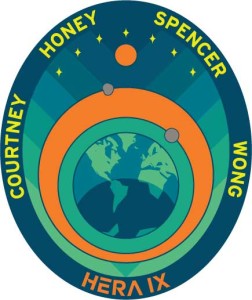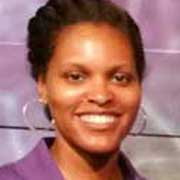Craig Technologies’ LaShelle Spencer Spends 30 Days In Human Exploration Research Analog Habitat
By Space Coast Daily // April 14, 2016
all-female, multicultural crew

Craig Technologies’ LaShelle Spencer spent 30 days in the Human Exploration Research Analog (HERA) experiment at Johnson Space Center.
The HERA, formerly known as the Deep Space Habitat, was transferred from the JSC Engineering in 2013. This unique modular three-story habitat was designed and created through a series of university competitions and was previously used in the Desert Research and Technology Studies in the Arizona desert.
The HERA provides a high-fidelity research venue for scientists to use in addressing risks and gaps associated with human performance during spaceflight. Historically, the habitat was used for exploration engineering systems demonstrations.
In its new role, the HERA will serve as an analog for simulation of isolation, confinement, and remote conditions of mission exploration scenarios.
Studies suitable for this analog may include behavioral health and performance assessments, communication and autonomy studies, human factors evaluations, and exploration medical capabilities assessments and operations.
ABOVE VIDEO: NASA Commentator Gary Jordan talks with Lisa Spence, the flight analog project manager for NASA’s Human Research Program, about the latest campaign using the Human Exploration Research Analog (HERA) habitat at the Johnson Space Center in Houston. A crew of four women is conducting a 30-day-long simulation of a two-year mission to an asteroid, conducting research for almost two dozen investigators trying to learn more about how a group of people interact and work with one another for an extended period of time.
Q&A WITH SPENSER ABOUT HER HERA EXPERIENCE
Q: Why did you choose to participate in this? What did it mean for you?
A: I have always been an adventurous person. I like to travel, see and try new things as much as possible. When the notice for HERA hit my inbox, I knew I had to apply. This was a chance to train, eat, sleep like an astronaut- the ultimate adventure!
After completion of the mission, I have learned a lot about myself and others. I’ve always known that I am fairly resilient and very resourceful, but it was the first time that I lent those talents to a crew that saw it and expressed appreciation for the value that I added to the team.
We were all integral parts of the team, and I learned how important it is to recognize and express satisfaction and gratefulness to and for others.
Q: How will the research be used?

A: The HERA analog afforded the opportunity for more than 20 investigators from around the world to test wearable technology, the effects of isolation on cognitive function, and team dynamics.
The information gleaned from this will help advance humankind farther into the depths of space by determining cognitive deficits (if any) that could develop during a mission, and to also help figure out a way to mitigate any detrimental effects to allow crew to remain highly functional and cohesive throughout the duration of the mission.
Q: What do you think this means for the future of space travel?
A: Besides the knowledge gained from the studies being conducted, I believe the internet and social media attention that this HERA mission has garnered will help spread the word of the ground-breaking research that NASA is conducting.
I hope that the portrayal of our , will inspire women and minorities that they, too, can be a part of this community of researchers, engineers and explorers. I firmly believe that diversity is an essential key to problem solving – more minds with different backgrounds will bring different solutions to problems.
Q: What was the best part?
A: For me, the best part was being able to try the food prepared and packaged for the astronauts. The best examples were the shrimp cocktail, lemon curd cake and creating a “hamburger” out of a re-hydrated beef patty, tortilla and “military cheese” spread.
Q: What was the hardest part?
A: The 16 hour days. Up at 7 a.m. and lights out at 11 p.m. Due to the nature of the research being conducted, we were not allowed to take naps or relax in our crew quarters during day-time hours. I am an “early to bed” person, so staying up so late proved to be the hardest part for me.

I remember telling my husband that lights out was at 11 p.m. (for 30 days), he replied with, “Do they know your lights will be out well before then?!”
Additionally, there are no couches or comfortable lounging areas. So during our leisure time, I learned to relax in a hard backed office chair or one of the camp chairs in a location we affectionately dubbed “the back porch.”
I would like to express my sincerest thanks to Carol (Craig) and the entire HR department. They helped make this a reality. They were quick with responses and my transition to and from HERA was seamless.
CLICK HERE FOR MORE SPACE NEWS
– NASA.gov contributed to this story















